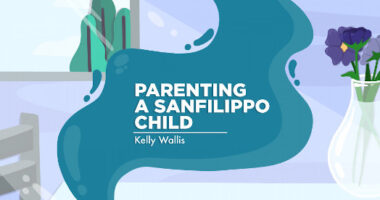Sanfilippo Syndrome and Sleep

Sanfilippo syndrome is a rare neurodegenerative disorder that causes intellectual and behavioral disabilities. Sleep problems are common, and often severe and difficult to manage. Here are some points to consider, including possible ways of managing disturbed sleep.
What causes Sanfilippo syndrome?
Mutations in genes that provide instructions for making proteins which play a role in pathways for breaking down large sugar molecules called glycosaminoglycans, or GAGs, cause Sanfilippo syndrome. These mutations mean that cells cannot break down GAGs, and they accumulate inside cells and tissues with devastating effect, especially those of the brain.
How common are sleep issues in Sanfilippo syndrome?
Between 87% and 92% of Sanfilippo patients have sleep disturbances. These usually begin in the disease’s second stage. Starting at age 3 or 4, children with this disease will frequently awaken, have difficulties settling in, and wander at night. During the third stage of the disease, typically in adolescence, sleep problems often become less severe.
In a research survey of 141 children with Sanfilippo syndrome, 91.5% of families reported disturbed sleep in the child affected by the disease. This percentage was significantly higher than for their unaffected brothers or sisters.
Another family questionnaire reported sleep problems in 78% of 80 children with Sanfilippo. Many also exhibited other nighttime behaviors, including staying up all night, chewing bedclothes, crying out, or laughing and singing.
How to tackle sleeping problems?
According to a recent review, combined behavioral and pharmacological approaches may be the best way to treat behavioral and sleep problems in children with Sanfilippo syndrome. The study also found a likely correlation between sleep disturbances and behavioral issues while awake.
According to its researchers, a first step in addressing these issues could be practical interventions such as the creation of a safe home environment, with established routines and schedules. Simple strategies such as darkening the room and bathing before bed may also act as cues to the child that it is time to sleep.
Other studies have noted that tailored behavioral therapies and different types of medication (antipsychotics, stimulants, mood stabilizers, antihistamines, melatonin, and anxiety medications) seem to be more effective when used together, rather than alone. In the survey of 141 affected families, melatonin was reported to be most effective for younger children and antihistamines for children who were younger when sleep problems began; 42 families used a combination of medicine and behavior therapy.
While behavioral and sleep problems in children with Sanfilippo syndrome can be a direct consequence of neurodegeneration caused by GAG accumulation, factors including muscle or abdominal pain, high intracranial pressure, and seizures can worsen these conditions.
Researchers cite a need for more controlled studies into ways of managing sleep disturbances in Sanfilippo syndrome to better assess the effect of various therapies and approaches.
Last updated: Aug. 4, 2020
***
Sanfilippo Syndrome News is strictly a news and information website about the disease. It does not provide medical advice, diagnosis, or treatment. This content is not intended to be a substitute for professional medical advice, diagnosis, or treatment. Always seek the advice of your physician or other qualified health provider with any questions you may have regarding a medical condition. Never disregard professional medical advice or delay in seeking it because of something you have read on this website.






